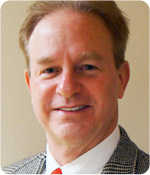Memphis Doctor Tops Trends In Wall Street and Medicine

 Memphis, TN (PRWEB) August 22, 2014
Memphis, TN (PRWEB) August 22, 2014
When Memphis’ Dr. Michael Steuer was growing up as a kid on the Suburban North Shore of Chicago, perhaps the furthest thing from his mind was pursuing a career in business. In fact, Dr. Steuer shunned the world of business from an early age. “I’d take the train from my home town after school, to go meet my Dad for dinner when I was in junior high school. We might have planned to see an old Charlie Chaplin revival double-feature, and I’d walk down South Wacker through the sea of double-breasted business suits to go to my Dad’s office, shake my head, and swear I’d never live my life like one of those business robots.” But some 40 years later, Michael Steuer now pursues his new side-career trading financial instruments from stock indexes and bonds to soybeans and the Japanese Yen. “I had planned on pursuing a career in medicine from age five, in an ivory tower somewhere, insulated from the real world, teaching residents, doing laboratory research, and making new medical discoveries. I never entertained a thought about entering the business world. I guess things worked out a little differently for me than I thought back then. But I still hate wearing business suits.”
“The trend is your friend,” says Dr. Steuer. “Markets tend to move in rather choppy, erratic motions, generally in one direction, and these trends can continue for a long time. There is a lot of money to be made in the long run if you can sit through the wiggles and zig-zags in the opposite direction.” But that doesn’t meet that Steuer sits through these trends for months at a time. His average holding time for any particular commodity tends to be only a week or so, and it’s not unusual for him to buy and sell the same product two or three times in a month. “If a trade is going in the right direction, I just stay in it until the market makes me exit. On the other hand, if a trade is going against me, I cut my losses short as soon as possible.”
While most people are familiar with buying a stock, holding it for a period of months to years, and selling higher for a profit, the midsouth pain management doctor sometimes profits during painful periods of time. During the financial crisis of 2008, when the market was in the process of collapsing, Michael Steuer tripled the size of his trading account by selling at lofty prices, and subsequently bought back the commodities at lower prices after the crash, a strategy known as “selling short.” “It’s exactly the opposite of buying today and selling tomorrow,” says Steuer. “When you sell short, you’re selling the value of something, hoping to buy it back at a lower price in the future.” He was as surprised as everyone by the magnitude of the crash. “I couldn’t have predicted how painful that year would have been, but the key was that I was prepared for it, in a positive way.”
Most professionals are highly skilled in their respective fields, but when operating in an arena of uncertainty, as in the business world, these professionals are usually poor businesspeople. MidSouth Pain Treatment Center’s Dr. Michael Steuer says, “Doctors are paid to be right. But in the field of pain management, no one walks in and says my L4-5 disc hurts. They say their back hurts.” And even though the patient may have an MRI that shows a major disc problem, “we often find that these diagnostic tests can be very misleading. I am often surprised by how much emphasis clinicians place upon MRI’s and other diagnostic tests, and I frequently find the diagnosis on the basis of the exam and what the patient tells me. This speaks much more loudly to me than a film.” One of Dr. Steuer’s idols in medical school at the University of Michigan was Sir William Osler (1849-1919) who once said, “listen to your patient, he is telling you the diagnosis.”
Making proper medical diagnostic decisions can be as confusing as picking the right side of the British Pound market. “As a doctor, it’s okay to be wrong sometimes, as long as you’re only a little wrong when you are wrong. If you adjust your thinking about what’s causing a patient to be in pain, and identify the exact source of the pain, then you can still really help the patient in a profound manner without a significant delay in getting her well,” says Dr. Steuer. Being on the right side diagnostically, then, is a lot like being on the right side of the commodities markets.
“I went into medicine to help change people’s lives,” says Steuer. “I never realized that making good medical decisions was so similar to making good trading decisions.” Both fields involve minimizing risk to the patient (or the trading account), and maximizing benefit by analyzing all of the facts and arriving at the proper conclusion. “Maybe I shouldn’t have been so quick to discount how fascinating the world of business is,” he says, “because whether you’re a doctor or a futures trader, the challenge is to use good judgment and make good decisions.”